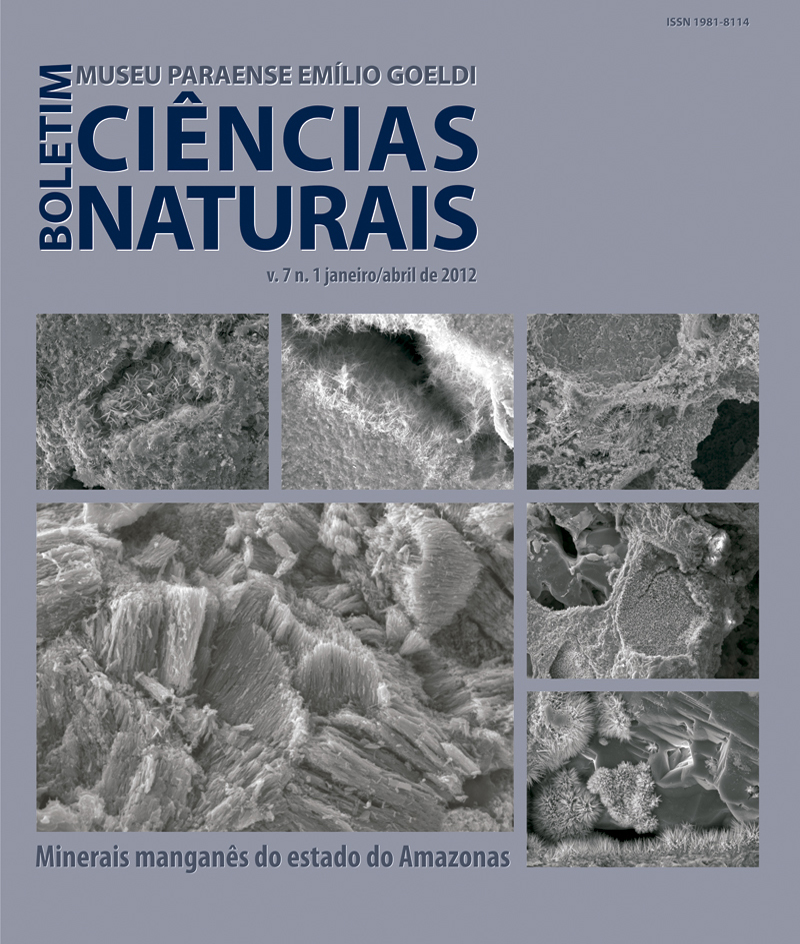The Pirabas Formation (Early Miocene from Brazil) and the Tropical Western Central Atlantic Subprovince
DOI:
https://doi.org/10.46357/bcnaturais.v7i1.604Keywords:
Neogene, Pirabas, Paleoecology, Paleobiogeography, Proto-CaribbeanAbstract
The Neogene Tropical Western Central Atlantic-South American faunal assemblage from the Pirabas Formation (Early Miocene) has specific and unique features, which distinguishes it from the rest of the Proto-Caribbean Subprovince in diversity, paleoceanographic condition and ecosystems. Principal component analysis (PCA) distinguished three groups of localities with similar faunas (Group A: Ilha de Fortaleza, Colônia Pedro Teixeira and Praia de Fortalezinha; Group B: Estação Agronômica, Ilha de Marajó, Turiacu, Baixo Parnaíba, Aricuru and Salinópolis; Group C: Capanema B-17 Mine) and five different depositional facies (surf zone, beach, lagoons, tidal channel and tidal delta), in agreement with previous geological studies showing heterogeneous paleoenvironments among the outcrops. These heterogeneous lithostratigraphic sequences suggest different members, and may be related to different ages along the Pirabas sequence. The Neogene Northwestern Atlantic Subprovince is erected to encompass this entire geographical area.
Downloads
Published
Issue
Section
License
Publication means fully assigning and transferring all copyrights of the manuscript to the journal. The Liability Statement and
Assignment of Copyrights will be enclosed with the notice of acceptance. All the authors must sign the document and return it to the journal.








